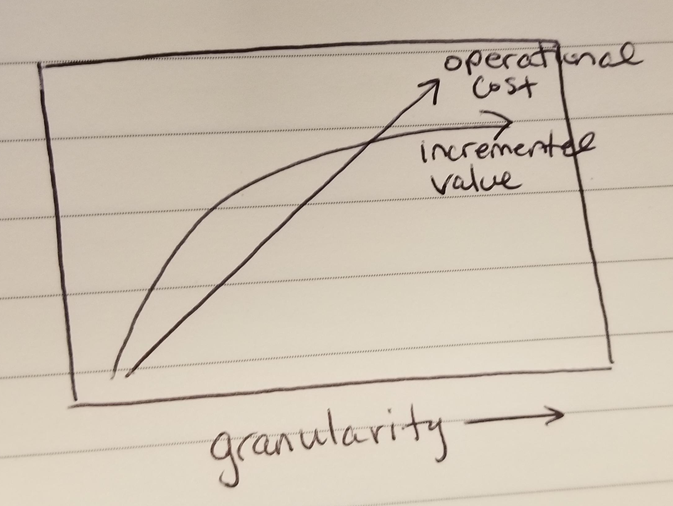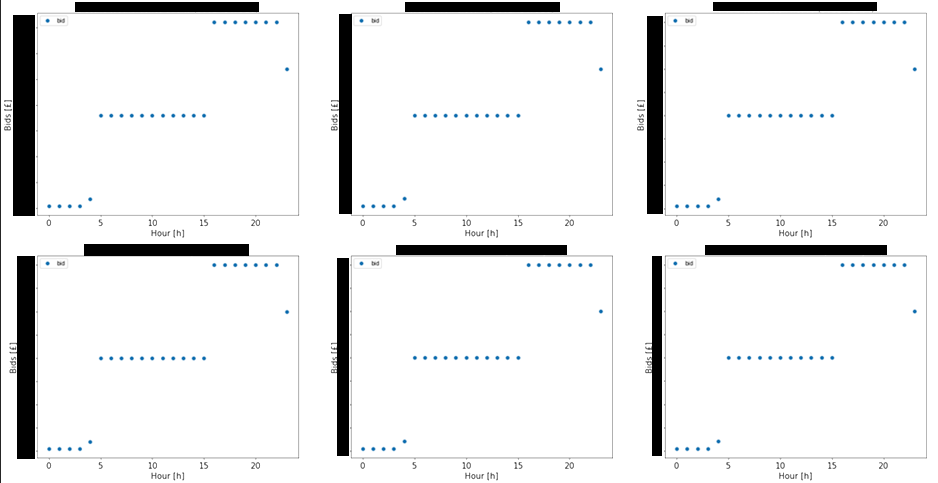Identifying Data Science opportunity
The objective of Data Science organizations should be to increase the percent of algorithmic decision-making that is happening within high-value business processes. If decisions are being made solely by humans then we should be looking for opportunity to enhance the decision-making via the application of data and algorithms to create additional efficiency or competitive advantage. However, at times it can be difficult to know the feasibilty of implementing and potential improvement in implementing algorithmic transformation within a business process. One red flag you may want to look for is sets of identical, repetitive reports as a potential indicator as this indicates 1) likely human decision-making since it is not nuanced to the granular reporting level 2) ability to get data at below current operational level and 3) business interest in the process.
Delivering competitive advantage via algorithms
There are a few ways that algorithmic decision-making can help drive competitive advantage:
- Productivity improvement - potential cost-savings that primarily come from the automation aspects of algorithmic decision-making.
- Decision-making accuracy - humans are notoriously variable in work performance and in many cases algorithms just consistently out-perform humans when it comes to decisioning and prediction tasks.
- More Granular operations - algorithms are able to operate at a much more granular level than humans enabling tactics that are customized at the lowest possible level of execution.
Of the items mentioned above driving competitive advantage via ultra-granular operations is the benefit that most often resonates with me. If your competition is planning distribution at a national level and you are planning at a regional level then you will out-perform them. If your competition is targeting all Women but you are targeting Women with a high purchase propensity then you will out-perform them. If your competition is managing inventory at a Retailer chain level and you are managing it at a Retailer individual store level then you will out-perform them. It is almost inevitable that with every increase in operational granularity there will be additional opportunity for optimization and thus value creation.
While more granular operations typically produces incremental value - they do often come with additional cost. Additionally the advantages incurred via increased granularity are often diminishing at each level. This relationship can be expressed via the following:

Spotting opportunity for increased granularity
Repetitive, identical reports may indicate the opportunity to increase the granularity of your operations. For instance below are 6 examples keyword campaign bid pricing from the same day:

This is just a small sample of reporting from that day - there were many other identical graphs present which made this pattern even more obvious. Additionally the absolute values of the bids were different but the same pattern was present.
What becomes pretty clear is that all of the keywords are following a simliar pattern. This strongly implies that some sort of heuristical approach is being applied at a higher level. It is very unlikely that this higher-level bidding strategy is maximally optimal for every keyword, meaning that there is opportunity to improve KPIs by applying a more granular (keyword-level) bidding strategy. Managing a bidding strategy at a keyword level across thousands of keywords would not be feasible via human operators - requiring the application of some sort of automated, algorithmic approach (i.e. Data Science!).
In addition to the indication of potential increased granular operation opportunity, the fact that we can generate reports at this level also indicates that we have access to data that can drive our algorithmics - making it much more feasible we can bring algorithmic automation to life (getting data is typically the hardest part of Data Science). And finally, knowing that reports are being generated in this area means there is business interest and at least some motivation to drive optimization or executional discipline.
Net - if you happen to be in a business or process review session and see graphs or charts that look oddly repetitive - it may be time to start thinking about enrolling the Data Science team to see if opportunity to increase your granularity of operations via algorithms!
